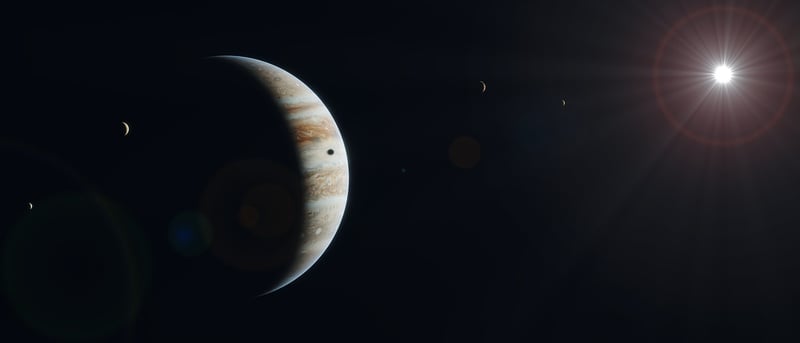Jupiter's Moons
Exploring the Wonders of Celestial Bodies: A Focus on Jupiter's Moons
Our universe is a vast expanse filled with celestial bodies that continue to fascinate and intrigue us. Among these celestial bodies, Jupiter stands out as a giant planet with a unique system of moons that orbit around it. Let's delve into the wonders of celestial bodies and take a closer look at Jupiter's fascinating moons.
Celestial Bodies: A Brief Overview
Celestial bodies are natural objects that exist in space, such as planets, moons, asteroids, comets, and stars. They play a crucial role in the formation and evolution of the universe, contributing to its beauty and complexity.
Jupiter: The Giant of the Solar System
Jupiter is the largest planet in our solar system and is known for its massive size and distinctive striped appearance caused by swirling clouds in its atmosphere. It is often referred to as a gas giant due to its composition primarily of hydrogen and helium.
One of the most fascinating aspects of Jupiter is its extensive system of moons, which currently stands at 79 confirmed moons orbiting the planet.
Exploring Jupiter's Moons
Jupiter's moons are diverse in size, composition, and characteristics, offering a glimpse into the complexities of our solar system. Among these moons, four large moons stand out as the Galilean moons, discovered by Galileo Galilei in 1610. They are:
- Io: Known for its volcanic activity and colorful surface.
- Europa: Believed to have a subsurface ocean that could potentially harbor life.
- Ganymede: The largest moon in the solar system, even bigger than the planet Mercury.
- Callisto: Covered in impact craters and considered one of the oldest surfaces in the solar system.
These moons offer valuable insights into planetary geology, astrobiology, and the potential for life beyond Earth.
Conclusion
Studying celestial bodies like Jupiter and its moons not only deepens our understanding of the universe but also sparks curiosity and wonder about the vastness of space. The mysteries waiting to be uncovered among these celestial bodies continue to inspire scientists and enthusiasts alike to explore further and unlock the secrets of our cosmic neighborhood.

Let's keep looking up at the night sky, marveling at the beauty and complexity of the celestial bodies that surround us.
